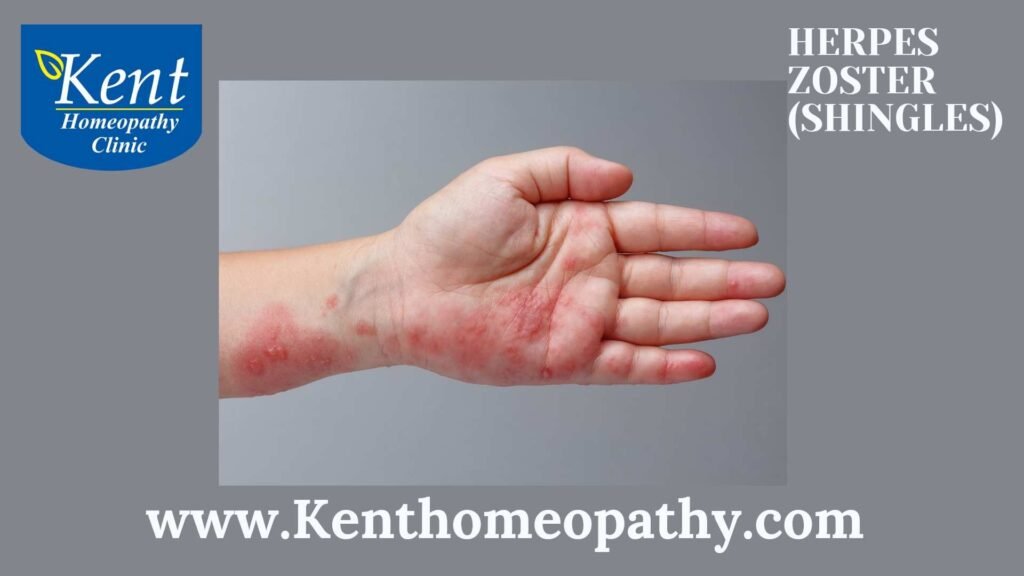Herpes Zoster (Shingles)

Herpes Zoster (Shingles): Understanding Symptoms, Causes, and Types
Herpes Zoster, commonly known as shingles, is a viral infection caused by the reactivation of the varicella-zoster virus, which is responsible for chickenpox. After a person has had chickenpox, the virus can remain dormant in nerve cells and later re-emerge as shingles. Understanding the symptoms, causes, and types of herpes zoster is essential for accurate diagnosis and appropriate management.
Symptoms:
- Pain and Tingling: Often, the first symptom is pain or tingling in a specific area, commonly on one side of the body or face.
- Rash: A rash typically follows the pain, developing into red, fluid-filled blisters that resemble a band or strip. The rash is usually limited to one side of the body.
- Itching: The affected area may be intensely itchy.
- Flu-Like Symptoms: Some individuals may experience fever, headache, and general malaise.
- Sensitivity to Touch: The rash and affected skin can be sensitive to touch.
Causes:
The primary cause of herpes zoster is the reactivation of the varicella-zoster virus, which remains dormant in nerve cells after a person has had chickenpox. Several factors may contribute to the reactivation, including:
- Weakened Immune System: Conditions such as aging, immunosuppressive medications, or diseases like HIV can weaken the immune system, allowing the virus to resurface.
- Stress: Physical or emotional stress may trigger the reactivation of the virus.
- Certain Medications: Some medications, particularly those affecting the immune system, may increase the risk of shingles.
Types:
- Dermatomal Shingles: The most common type, affecting a specific dermatome (area of skin) served by a single nerve or nerve group. This often results in a band-like pattern of rash on one side of the body.
- Ophthalmic Shingles: Involves the nerves around the eye, potentially causing eye pain, redness, and vision problems.
- Ramsay Hunt Syndrome: Affects the facial nerve, leading to ear pain, rash around the ear, and facial weakness.
- Disseminated Shingles: In rare cases, the rash can spread to a larger area or involve multiple dermatomes, posing a greater risk of complications.
Contact to know more
Contact
Timings
Monday to Saturday:
11:00 AM to 02:30 PM
06:30 PM to 09:00 PM
